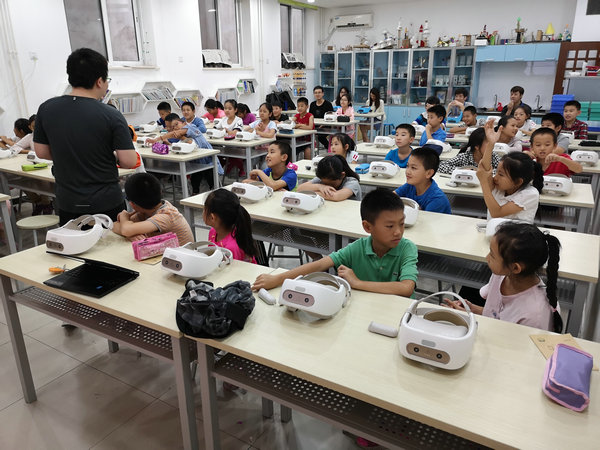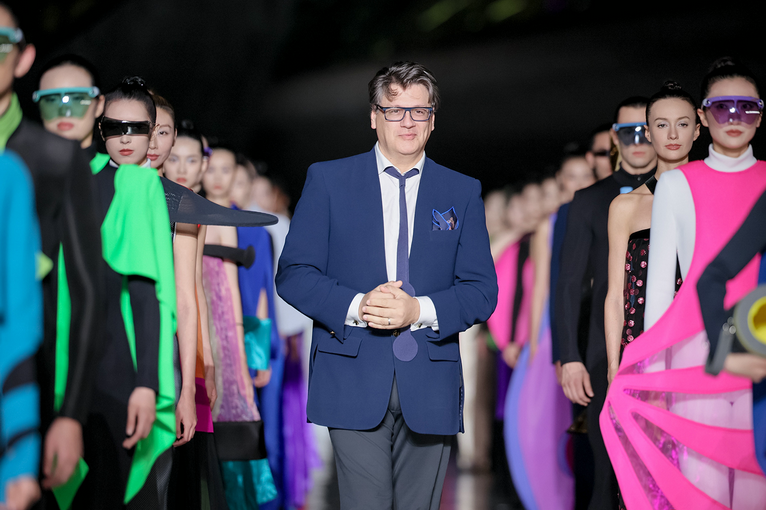Total immersion


Immersive learning
Zhou, who's also a professor at Beijing Normal University, jokes that many of the students in his class are easily distracted by their smartphones, a phenomenon that may highlight how the current methods of teaching don't always meet students' desire for interactive teaching methods, which are now being realized by virtual reality.
Luisa Caldas at the University of California, Berkeley, who attended the recent education forum in Nanchang, talked about how her classroom teaching experience has been enhanced by the use of VR technology.
Students in the architecture class she teaches at UC Berkeley have been proactive in applying VR technology to building design, which allows them to view 3D architectural forms from a 360-degree perspective and assess the different effects to the building caused by changes in the surrounding environment.
Caldas says that her students embraced the opportunity to try out VR technology and generally found that it helped them with their work. She plans to promote these kinds of VR classrooms to more subjects.
"It's an immersive learning tool that changes the way we study," she says.
In China, many colleges and vocational schools are embracing VR technology by applying it to disciplines like medicine-allowing students to practice performing surgery in the virtual world-psychology and machinery.
Xu Qinghao, vice-president of Vivedu, a Beijing-based company that provides VR classroom systems and content for schools, says the company has offered tailored VR classes to lots of schools and universities in the past two years.
Most recently, they equipped a university classroom with a VR system to support research on a new engine.
Each part of the engine can be clearly seen and moved by students using VR headsets. All the 84 parts can be assembled and separated in seconds.
Xu says the ultra-high definition of each part makes them appear "more real than the real thing. You don't have the chance to see them in such a detailed way in reality."
Vivedu was set up in 2016, a year that is seen as the start of the VR industry's boom. Now, the company offers more than 200 courses for schools and can provide a VR classroom accommodating up to 500 students.




































